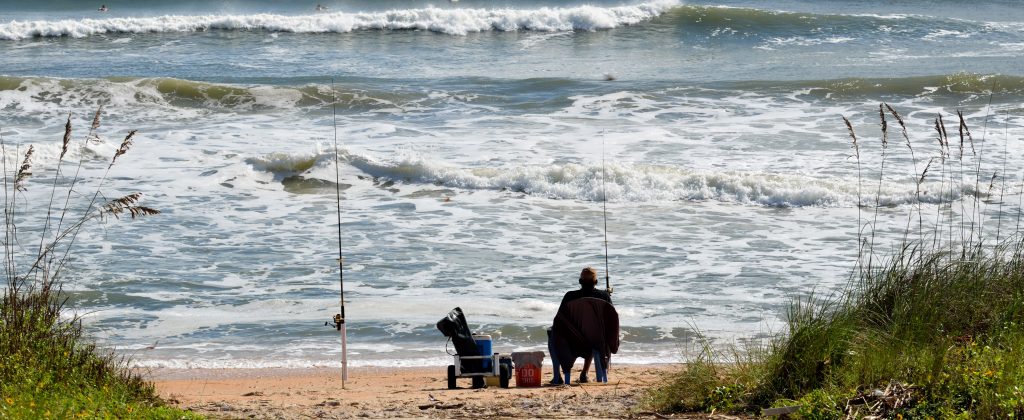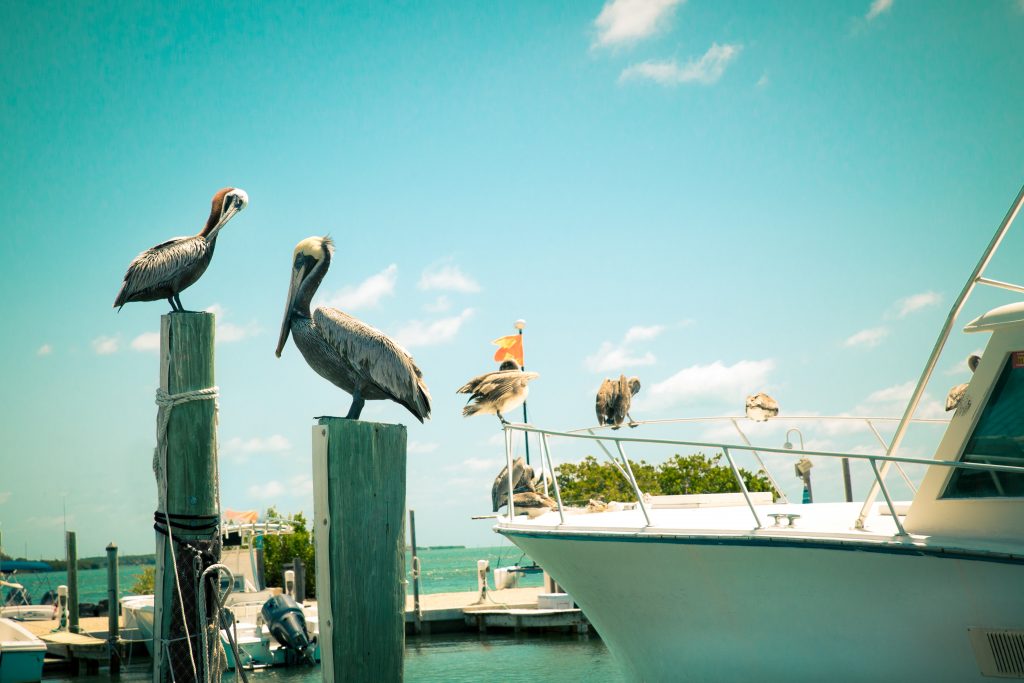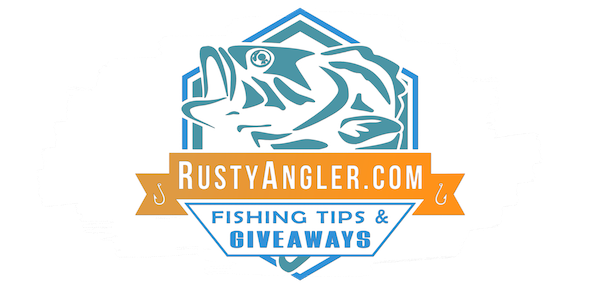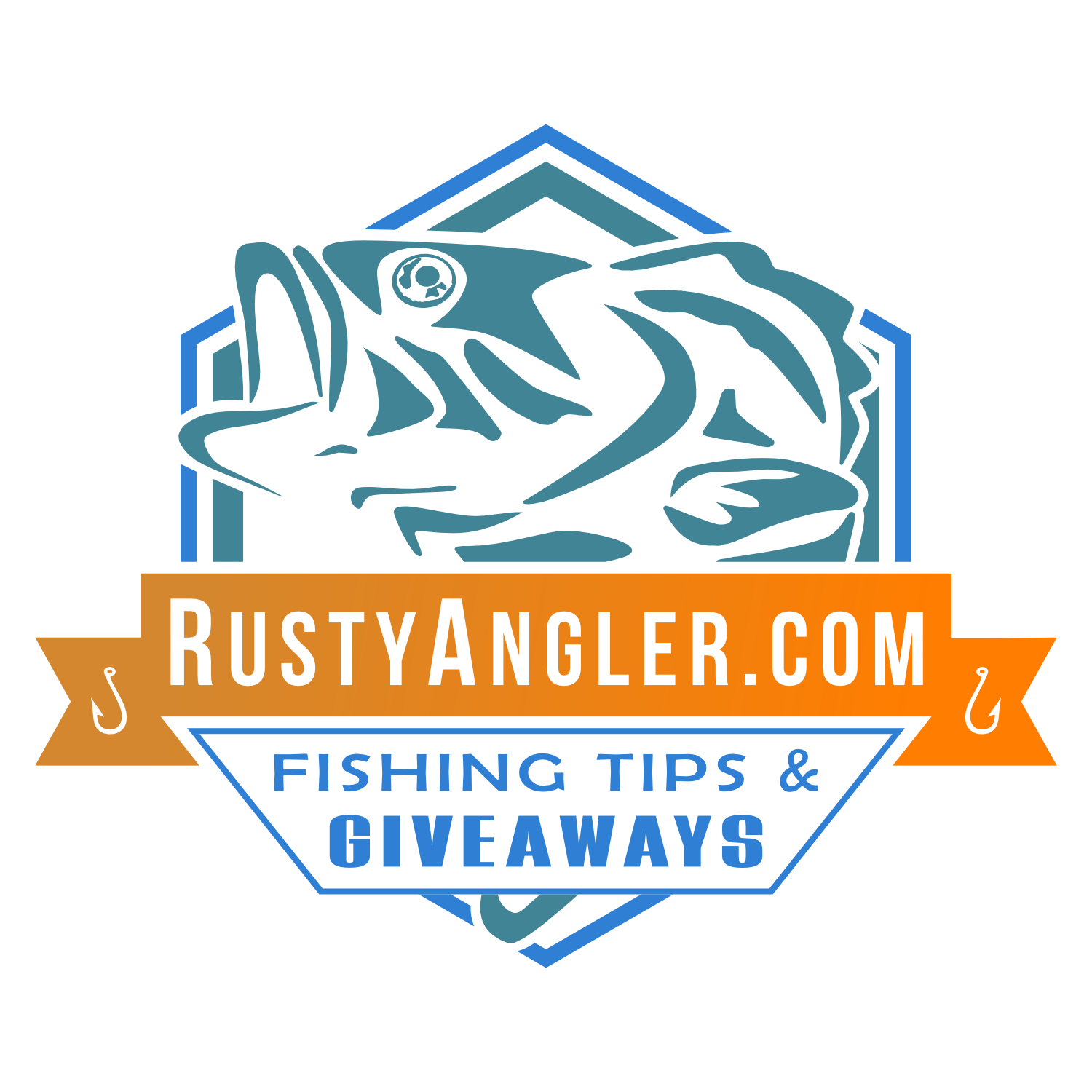Inshore Fishing – More bang for your buck
Let’s face it, who doesn’t want to land a sailfish, a giant tarpon, or even better, a shark? Well anyone that does, and that should be all of us, needs to get into the world of inshore fishing.
Inshore fishing, or more precisely inshore saltwater fishing, is any type of fishing that takes place in waters up to thirty meters deep. That’s 98 feet for us Americans, or 16 fathoms for all you salts out there.
Enter Our Inshore Offshore Fishing Giveaway
What makes inshore saltwater fishing so popular is that you get all the best game fish, but the water is calmer. That means smaller, more basic boats work well, and your gear can be less than deep sea fishing too.
Inshore saltwater fishing – when you’re ready for the big leagues
 But before we get too in-depth, pun intended, let’s do a little saltwater fishing 101. First and foremost, salt water destroys everything. I mean, everything! Lines, hooks, rods, reels, boats, skin. If it exists, saltwater will do a number on it.
But before we get too in-depth, pun intended, let’s do a little saltwater fishing 101. First and foremost, salt water destroys everything. I mean, everything! Lines, hooks, rods, reels, boats, skin. If it exists, saltwater will do a number on it.
This means you need to plan accordingly in terms of equipment. Salt water fishing gear needs to be durable and maintained. For example, use strong, new line when you go out.
Sure, it can be a pain in the old rumpus to keep swapping out the line on your reel, but nothing hurts as much as getting that monster catch right to the boat and then watching your line snap. If your filament is feeling rough or looks dull, change it for new monofilament.
Salt water fishing tips – It’s all about the gear
The perfect reel for saltwater can be hard to find. If all your experience is freshwater fishing, you need to understand the havoc the sea will wreak upon your gear.
The water is highly corrosive, which means low-quality, inexpensive reels tend to become rusted and worn quickly. Also, the water is rougher, so more strain is put on reels and the like.
For saltwater reels, look into stainless steel and titanium components. You’re going to pay for them, but one good reel will last as long as five cheap ones. Daiwa, Okuma, and Shimano all make excellent reels capable of holding 600 yards of line, a must for big game fish.
While these powerhouse reels can get expensive, you can find them for a lot less if you look for a good fishing giveaway or fishing sweepstakes. Here at the Rusty Angler we believe in spending less to get more, and there are always good deals to be had on necessary equipment.
 Not just your reel, but all your gear needs to be able to handle the stress of saltwater. Saltwater lures will be submerged in the brine and subjected to the bites of truly powerful animals.
Not just your reel, but all your gear needs to be able to handle the stress of saltwater. Saltwater lures will be submerged in the brine and subjected to the bites of truly powerful animals.
The best lures for inshore saltwater fishing will be bright, highly reflective, and stand out from the surface of the water. These need to be seen, and the shine is important. If they dull, scrap them and get something new.
Current Marine Charts – Giving you all the Hotspots
If your fishing strategy is the same as your retirement strategy – maybe I’ll get lucky and win the lottery today – then there’s not a lot I can do to help you. But if you want to avoid wasting time and money, then investing in up-to-date marine maps and charts.
These charts are made for a reason, and they will point you to all the best hotspots for inshore saltwater fishing in your area. Update them regularly, and you should be reeling in the good times in no time.
Tidal currents are also important bits of information. Most anglers assume tidal currents follow the tides themselves. They are often wrong.
Channel entrances, islets and the like often have currents that significantly lag behind tides. Any fish in the area are likely to respond more to the speed and direction of the water than to the height of the tide
Florida – The Keys to Inshore Fishing
Florida inshore fishing is some of the best in the world. In addition, it means you don’t need a lot of travel or your passport to get there. With plenty of guides and vacations, it is an ideal spot to perfect your craft.
 With miles of Gulf coastline and the ocean just off the shore and the Florida Keys, you simply can’t get much better. In addition, there are a lot, and I mean a lot, of fishing giveaways and fishing promotions that can take you there for pennies on the dollar.
With miles of Gulf coastline and the ocean just off the shore and the Florida Keys, you simply can’t get much better. In addition, there are a lot, and I mean a lot, of fishing giveaways and fishing promotions that can take you there for pennies on the dollar.
Not only that, but many of the species in Florida will go after live bait as well as good lures. This brings another level to this exciting type of fishing. Just remember, what makes live bait a good choice is that it’s alive. In other words, oxygenate live bait.
When using live bait, good water circulation is a must. The best water is incoming, but hanging a basket over the rail isn’t always an option. In that case, an aerator is a good alternative. If you must keep it in a bucket, change the water frequently to keep it sufficiently oxygenated.
We don’t often talk about trout outside of fresh water, but you can’t bring up live bait without mentioning sea trout. Sea trout, like sea bass, are a fantastic fish to catch and eat, and they love live bait.
When inshore fishing, the best baits for trout are shrimp, mullet, and pinfish. Put these on your hook, troll that line, and wait for the action to start.
Keep it Clean – Keep it Dry
Finally, if you are new to saltwater fishing you need to remember to keep your gear clean and dry after you’re done for the day. Rinse everything in clean water to get the salt out of the mechanisms.
For complex reels, it’s a good idea to take them apart and thoroughly clean the mechanisms. Soak lures and hooks for an hour or more in fresh water before laying them out to dry.
And dry them you must. Even if you only used them a little, if there’s saltwater on them and they stay in your tackle box, chances are the next time you open it you’ll see a bunch of rusted equipment.
So head out to the ocean and try your hand at inshore saltwater fishing. There’s nothing quite like it. Just ask any Old Salt.
If you want to learn about catching walleye, we’ve got some great information for you, too.

